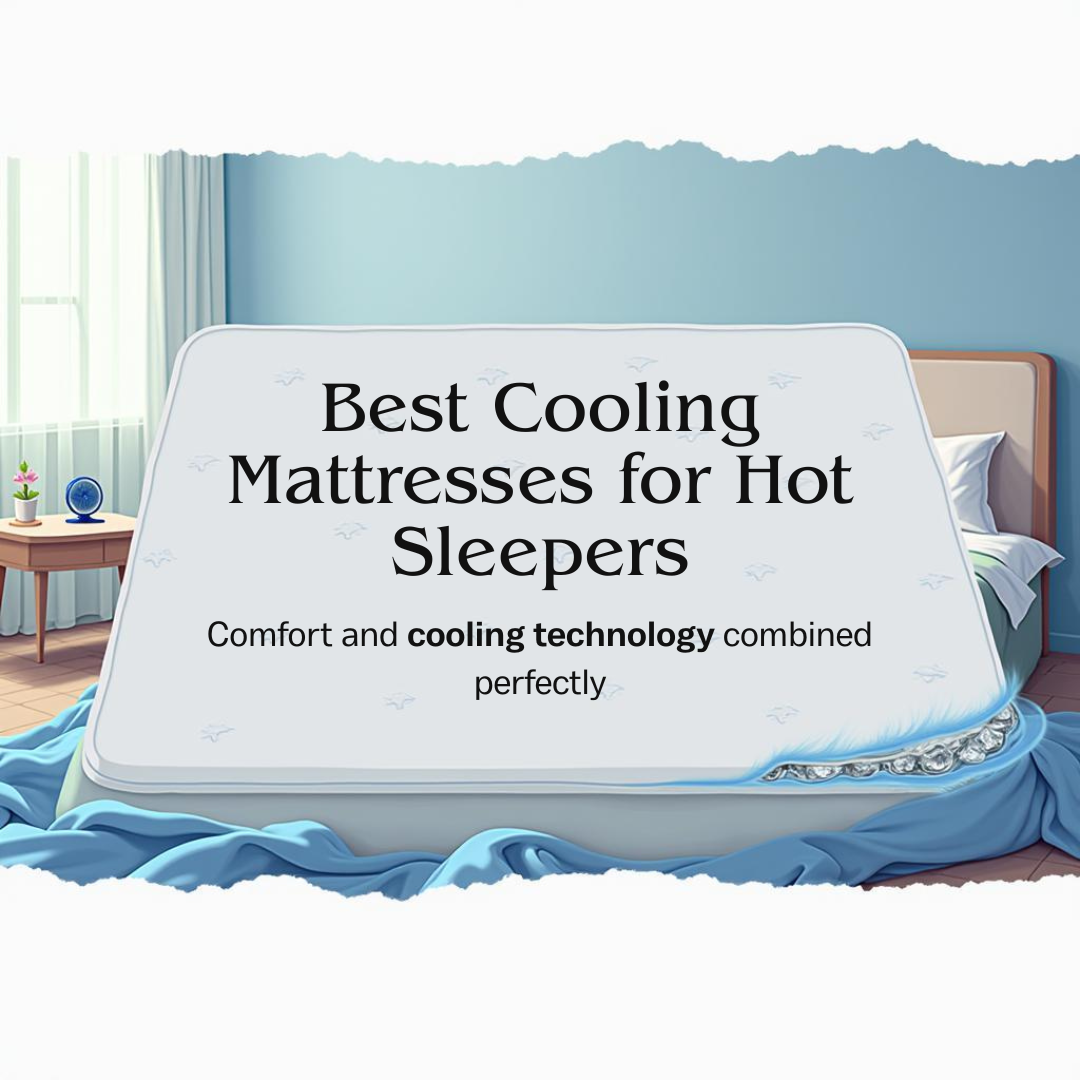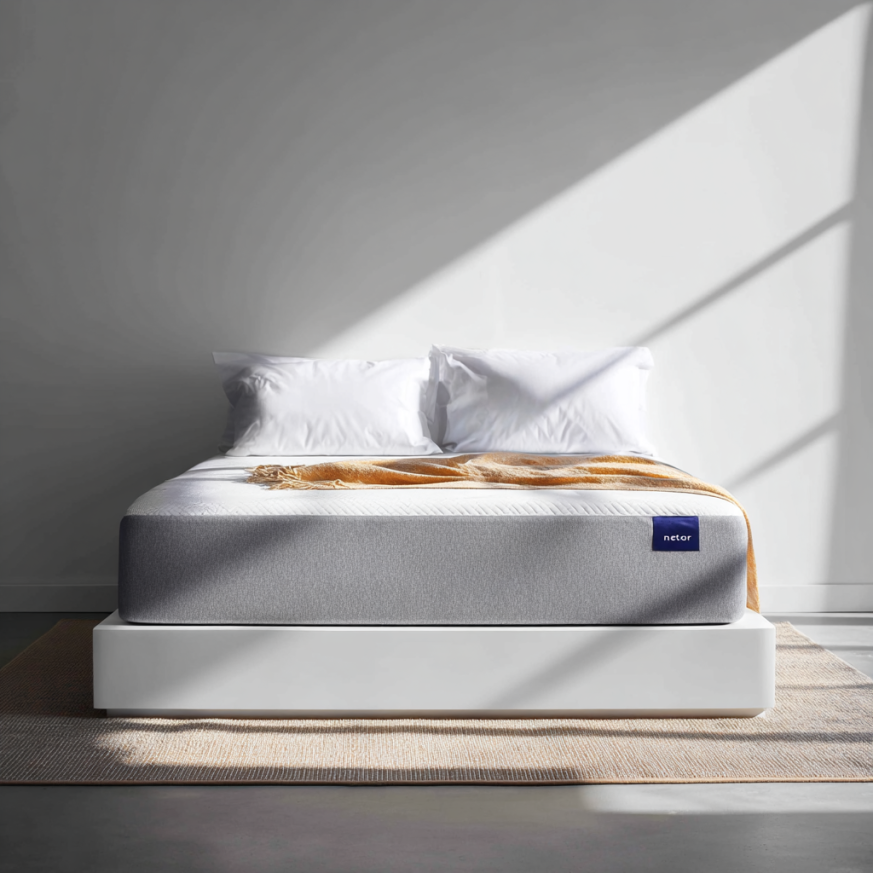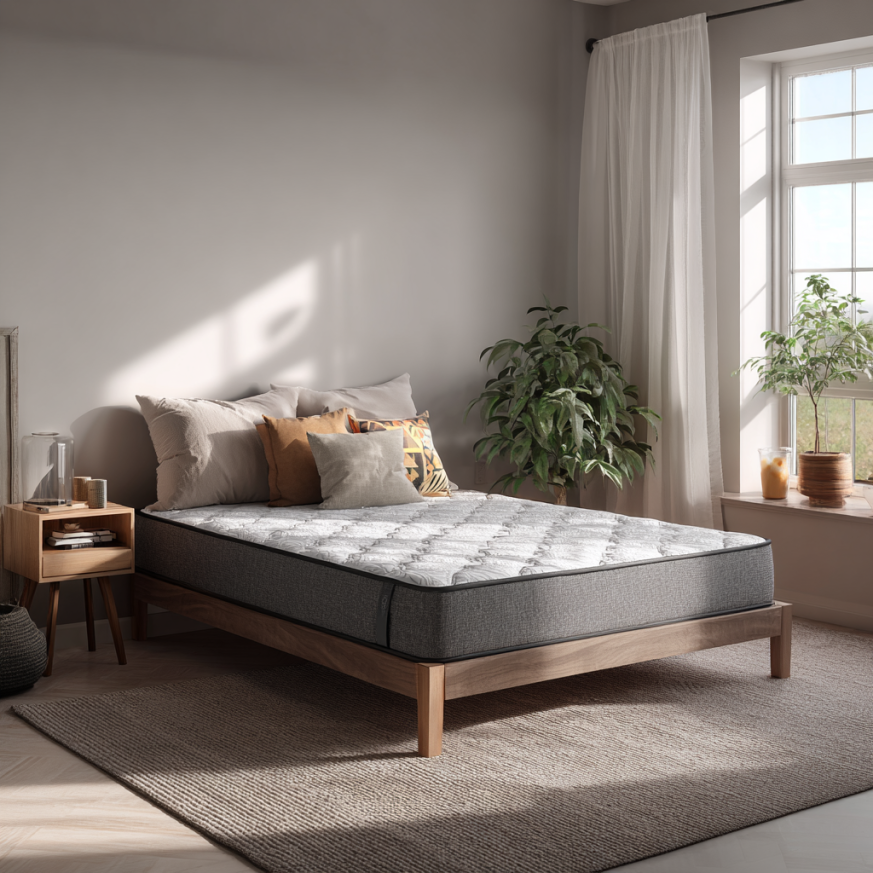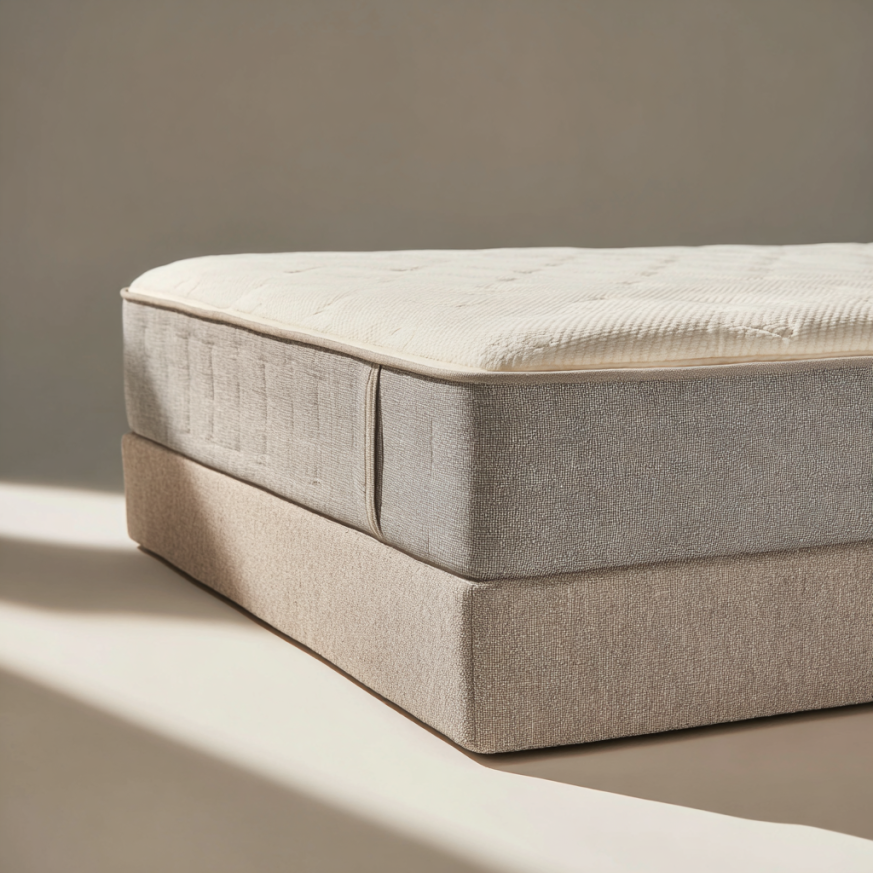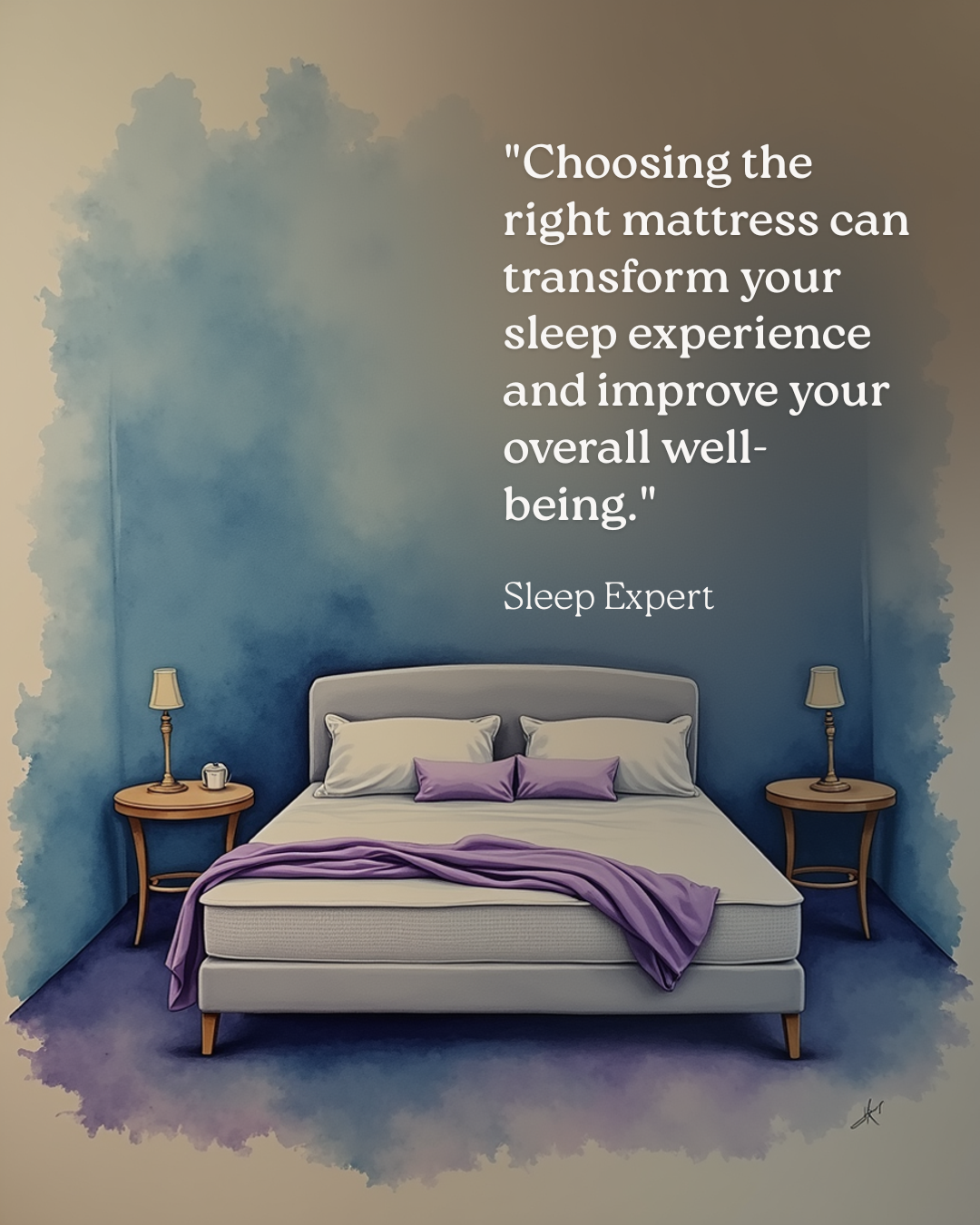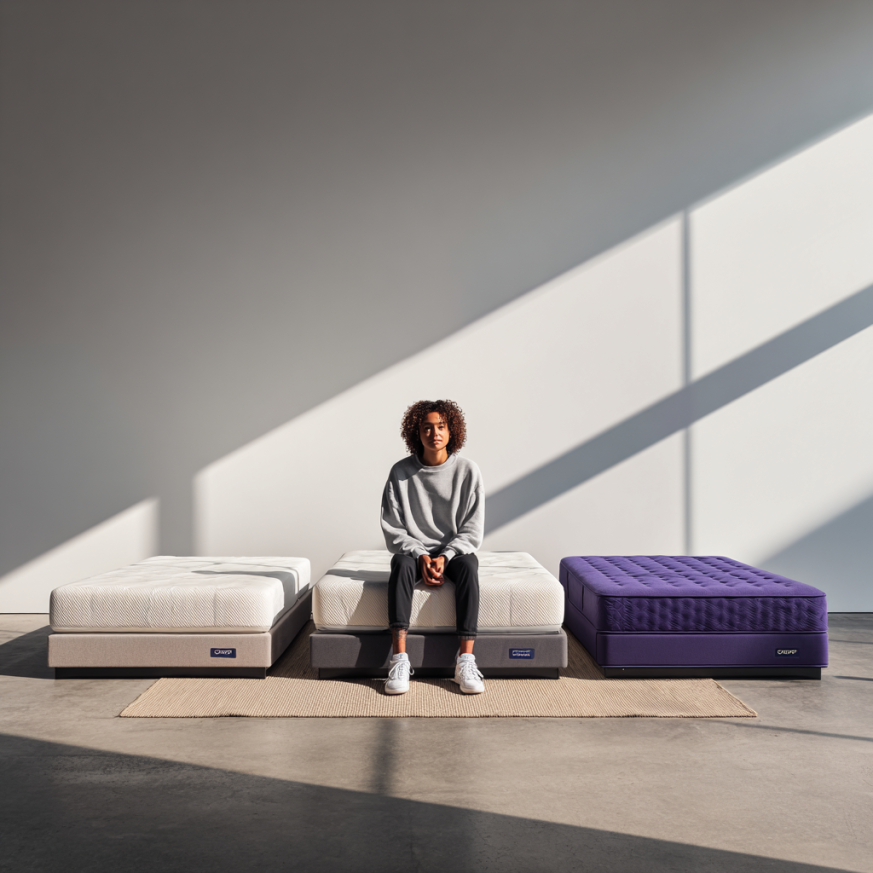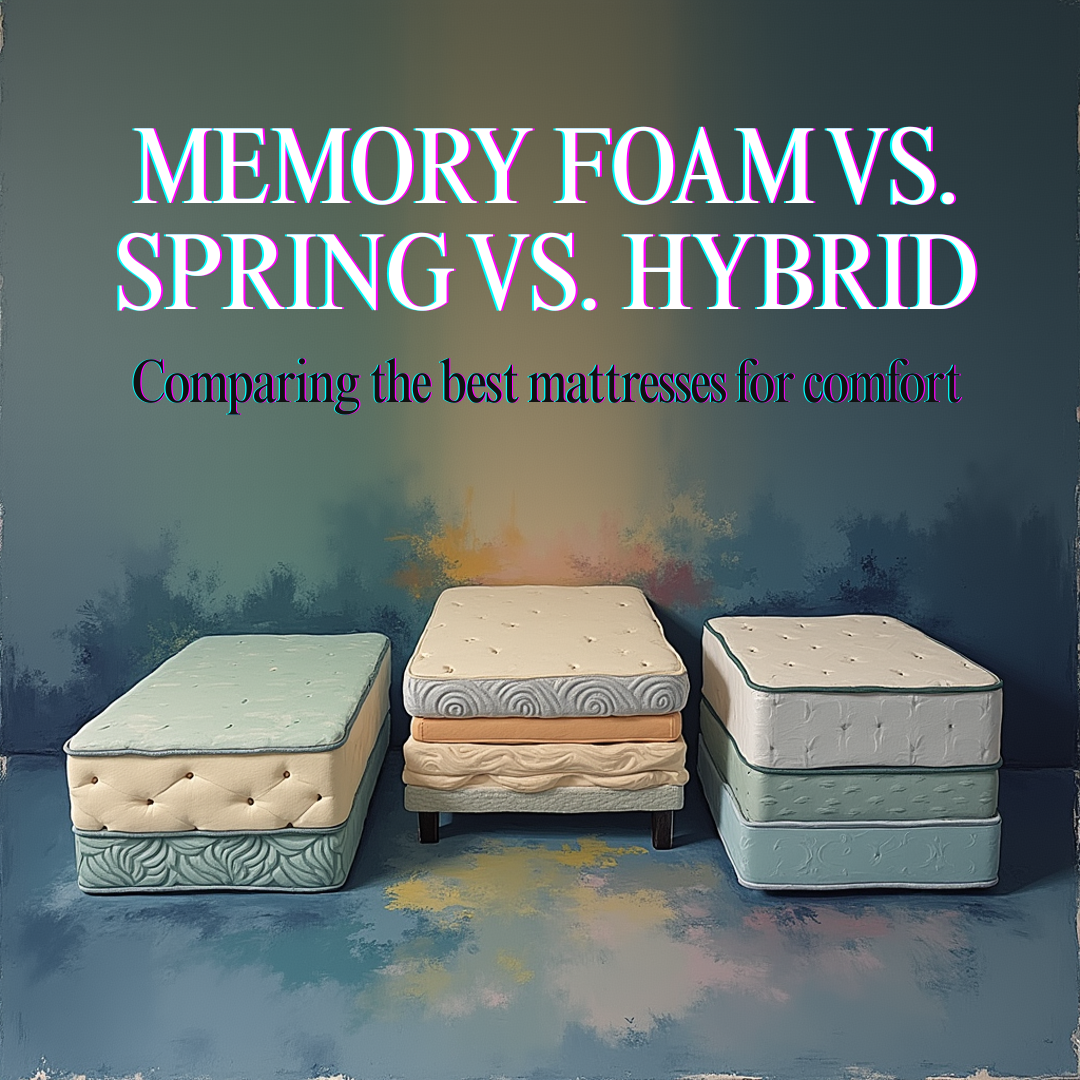Best Cooling Mattress: 9 Top Picks for Hot Sleepers (2025)
The best cooling mattress keeps airflow steady, wicks away heat, and prevents night sweats so hot sleepers can rest cool and comfortable all night long.
Overheating at night is one of the most common reasons for restless sleep. If you’ve ever tossed and turned while sweating, you know how much temperature impacts comfort. Fortunately, mattress technology has advanced, and cooling designs are now available at every budget. From breathable latex to hybrid beds with airflow coils, there’s a cooling solution for every sleeper.
Before making a choice, check our mattress buying guide for step-by-step selection tips and compare materials in memory foam vs spring mattress. Combination sleepers should also see our position-based mattress guide.
Key Takeaways
- Gel foams, latex, and hybrids are the top cooling mattress materials.
- Different sleeping positions need firmness + airflow balance.
- Couples benefit from motion-isolating yet breathable designs.
- Look for cooling covers, coils, and phase-change fabrics.
- Search with the phrase best cooling mattress to find top picks.
Why cooling matters for hot sleepers
Temperature regulation is crucial for deep, restorative sleep. When mattresses trap heat, sleepers wake up more often, disrupting natural sleep cycles. Cooling mattresses use breathable covers, open-cell foams, coils, or latex to prevent overheating and keep your core temperature steadier through the night.
According to the CDC, adults need at least seven hours of sleep per night—staying cool can help you reach that target consistently.
Mini-scenario: If you wake up sweaty at 3 a.m., a hybrid with airflow coils can keep you cooler without sacrificing support.

Best cooling mattress materials
Materials drive temperature control and feel. Choose based on how much contouring you like and how hot you sleep—then match responsiveness to your movement at night.
- Gel memory foam: Infused with cooling gel to reduce heat retention while offering deep contouring.
- Latex: Naturally breathable, durable, and bouncy—great for combination sleepers who run warm.
- Hybrid: Coils boost airflow while foams or latex provide comfort—often the most balanced choice for couples.
- Innerspring: Classic coil beds maximize airflow; without plush foams they can feel bouncier and less contouring.
Mini-scenario: Love a “floating” feel? Latex keeps air moving and makes changing positions easy.
Best cooling mattress by sleep position
Your sleep position determines the ideal mix of firmness and airflow. Start with support, then refine using cooling materials and breathable fabrics.
Side sleepers
Side sleepers need contouring at shoulders and hips. Hybrids with gel foams or latex keep pressure relief while avoiding heat buildup. Aim for medium to medium-soft firmness.
Back sleepers
Back sleepers require lumbar support plus cooling. Latex and hybrid models with zoned coils are ideal. Medium to medium-firm options help maintain spinal alignment.
Stomach sleepers
Stomach sleepers benefit from firmer builds to prevent hips from sinking. A latex or firmer hybrid mattress keeps airflow open and reduces overheating.

Cooling features to look for
Small details add up. Prioritize materials and constructions that move heat away from your body and keep your microclimate stable.
- Breathable covers: Fabrics like cotton, Tencel, and phase-change textiles wick heat and moisture.
- Zoned coils: Promote airflow and adapt support under heavier areas.
- Open-cell foams: Create ventilation channels within the mattress.
- Graphite & copper infusions: Draw heat away from the body and may improve durability.
For safer materials, look for trusted third-party standards. A quick primer on mattress and bedding certifications can help you spot low-VOC foams and responsibly made fabrics. Eco shoppers may also appreciate this non-toxic mattress guide.
Mini-scenario: Hot sleeper sharing a bed? Zoned coils plus a cooling cover can tame both heat and motion transfer.
Buyer’s checklist: Finding the best cooling mattress
Keep the process simple: match firmness to your position, then confirm airflow features, policies, and budget before you buy.
- ✅ Match firmness to your sleep position (soft for side, firm for stomach, medium for back).
- ✅ Prioritize breathable fabrics and airflow designs.
- ✅ Couples should choose motion-isolating hybrids or latex.
- ✅ Confirm warranty (10+ years) and sleep trial (90–120 nights).
- ✅ Set your budget range: $600–$3,000 depending on build quality.
Comparing brands? Our breakdown of popular designs in Casper vs Purple can help you weigh cooling covers, coil systems, and feel before you commit.
Mini-scenario: If you run hot and switch positions, shortlist two medium-firm latex hybrids, then choose the one with the cooler cover and longer trial.
Price and value of cooling mattresses
Cooling models exist at every price. As you move up, expect more durable foams, latex layers, advanced covers, and longer warranties.
- Budget-friendly ($600–$900): Gel-infused foam and entry-level hybrids.
- Mid-range ($1,000–$1,500): Advanced hybrids with cooling covers and zoned coils.
- Luxury ($1,800–$3,000): Premium latex and hybrids with multiple cooling layers and phase-change fabrics.
For budget picks that still sleep cool, see our best affordable mattress guide.

For deeper research, see Sleep Foundation: Best Cooling Mattress or Healthline: Best Cooling Mattresses.
FAQ
What is the best cooling mattress material?
Latex and hybrids are generally the coolest, thanks to breathable foams and coil airflow. Gel memory foams work well for contour lovers.
Do cooling mattresses really work?
Yes. Breathable materials and cooling technology reduce night sweats compared to dense all-foam beds.
Are cooling mattresses worth it?
Absolutely—if overheating disrupts your sleep, a cooling mattress improves comfort, health, and rest quality.
Which cooling mattress is best for couples?
Hybrid mattresses with motion isolation and breathable coils are ideal. Latex also suits active sleepers who move around often.
How long do cooling mattresses last?
Most quality cooling mattresses last 7–10 years depending on material quality, coil construction, and care.
Do I need special sheets for a cooling mattress?
No, but breathable sheets like cotton, bamboo, or linen maximize the cooling effect.
What’s the difference between cooling mattress toppers and cooling mattresses?
Toppers add a layer of comfort and minor cooling. True cooling mattresses have airflow-focused cores, fabrics, and long-term heat regulation.
Conclusion
The best cooling mattress combines breathable fabrics, airflow-focused construction, and firmness tailored to your sleep style. Whether you choose latex, gel foam, or a hybrid, these beds help hot sleepers finally achieve restful, sweat-free nights. For more cozy solutions, visit Cozy Bed Quarters.
Related reading from Cozy Bed Quarters
- The Ultimate Guide to Choosing a Mattress in 2025
- Best Mattress for Side, Back, and Stomach Sleepers
- Casper vs Purple: 7 Powerful Differences (+ Tuft & Needle)

